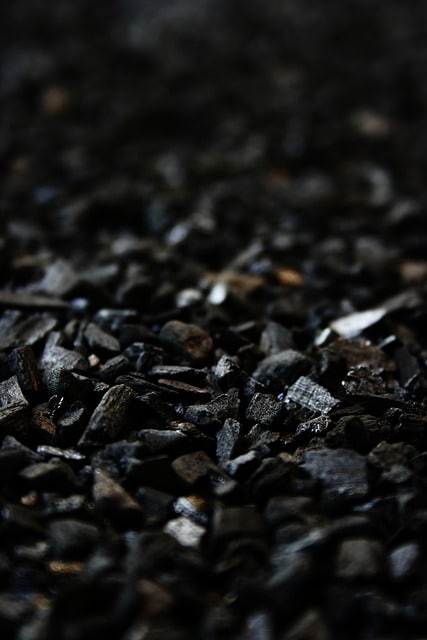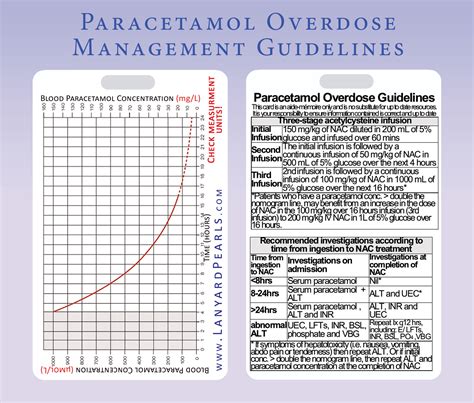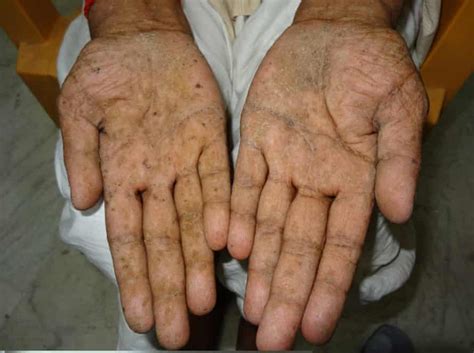
Carbon Monoxide Poisoning Symptoms
Carbon Monoxide Poisoning Symptoms
Carbon monoxide poisoning is a serious and potentially life-threatening condition that occurs when people inhale high levels of carbon monoxide gas. Carbon monoxide is an odorless, tasteless, and colorless gas that can be produced by fuel-burning appliances such as stoves, furnaces, and water heaters.
The symptoms of carbon monoxide poisoning can vary depending on the level of exposure and the length of time someone has been exposed. Mild symptoms may include headache, nausea, dizziness, and confusion. More severe symptoms can include chest pain, shortness of breath, and loss of consciousness.
One of the most concerning aspects of carbon monoxide poisoning is that it can be difficult to detect. Since carbon monoxide is odorless and colorless, it can build up in enclosed spaces without anyone realizing it. This is why it’s important to have carbon monoxide detectors installed in your home.
If you suspect that you or someone else may be experiencing carbon monoxide poisoning, it’s important to get to fresh air and seek medical attention immediately. Carbon monoxide poisoning can lead to brain damage and even death if left untreated.
Preventing carbon monoxide poisoning is also important. Make sure all fuel-burning appliances are properly maintained and vented, and never use a portable generator or charcoal grill indoors. It’s also important to never leave a car running in an enclosed space, such as a garage.
In conclusion, carbon monoxide poisoning is a serious and potentially life-threatening condition that requires immediate attention. Knowing the symptoms and taking steps to prevent exposure can help keep you and your loved ones safe. If you suspect carbon monoxide poisoning, get to fresh air and seek medical attention right away.
Common Symptoms of Carbon Monoxide Poisoning
Carbon monoxide is a silent killer that takes the lives of hundreds of people every year. This odorless, colorless gas is produced by incomplete combustion of fuels like natural gas, propane, oil, and wood, and can quickly build up in enclosed spaces like homes, garages, and cars. Carbon monoxide poisoning can occur even with low levels of exposure, making it important to know the common symptoms so you can take action before it’s too late.
One of the first signs of carbon monoxide poisoning is a headache. This is because carbon monoxide reduces the amount of oxygen that can be carried by your blood, leading to a lack of oxygen to the brain. The headache may feel like a dull ache or pressure on the forehead or temples, and may worsen over time.
Another common symptom of carbon monoxide poisoning is nausea and vomiting. This occurs because the gas irritates the stomach lining, causing feelings of sickness. Other gastrointestinal symptoms may include diarrhea and abdominal pain.
In addition to these symptoms, carbon monoxide poisoning can also cause dizziness, confusion, and weakness. You may feel lightheaded or dizzy, have trouble concentrating or remembering things, and struggle to complete simple tasks. These symptoms can be especially dangerous if you’re driving or operating heavy machinery.
Other signs of carbon monoxide poisoning include chest pain, shortness of breath, and flu-like symptoms such as fever and chills. If you experience any of these symptoms, it’s important to seek medical attention immediately and get to fresh air as soon as possible.
Preventing carbon monoxide poisoning is key, and there are several steps you can take to reduce your risk. Make sure all fuel-burning appliances are properly installed, maintained, and vented, and never use portable generators or grills inside your home or garage. Install carbon monoxide detectors on every floor of your home, and test them regularly to ensure they’re working properly.

By knowing the common symptoms of carbon monoxide poisoning and taking steps to prevent exposure, you can help protect yourself and your loved ones from this deadly gas. Don’t wait until it’s too late – take action today to stay safe.
Long-Term Effects of Carbon Monoxide Exposure
Carbon monoxide is a colorless, odorless gas that can be extremely dangerous when inhaled. It’s produced by the incomplete combustion of fuels such as gasoline, propane, and natural gas. Exposure to this gas can lead to serious health issues, and in some cases, even death.
The long-term effects of carbon monoxide exposure can be profound, especially if the exposure is prolonged or occurs at high concentrations. One of the most significant long-term effects is neurological damage. Carbon monoxide can interfere with the transmission of signals between nerve cells, leading to a range of symptoms such as memory loss, difficulty concentrating, and mood swings.
In addition to neurological damage, carbon monoxide exposure can also cause cardiovascular problems. The gas binds to hemoglobin in the blood, reducing the amount of oxygen that is carried to the body’s organs and tissues. This can lead to high blood pressure, heart disease, and other cardiovascular issues over time.
Another potential long-term effect of carbon monoxide exposure is respiratory problems. Inhaling the gas can damage the lungs and airways, leading to chronic bronchitis, emphysema, and other respiratory conditions.
Children, pregnant women, and elderly individuals are particularly vulnerable to the effects of carbon monoxide exposure. In children, exposure can lead to developmental delays and cognitive impairments. In pregnant women, exposure can increase the risk of miscarriage, stillbirth, and low birth weight.
Preventing carbon monoxide exposure is crucial to avoiding these long-term effects. Ensuring proper ventilation in enclosed spaces where fuels are burned, such as garages and basements, is essential. Installing carbon monoxide detectors in your home can also help you detect dangerous levels of the gas before it causes serious harm.
In conclusion, carbon monoxide exposure can have profound long-term effects on your health, including neurological damage, cardiovascular problems, and respiratory issues. By taking steps to prevent exposure, you can protect yourself and your family from the harmful effects of this dangerous gas.
Carbon Monoxide Poisoning in Children
Carbon monoxide (CO) is a colorless and odorless gas that can be lethal when inhaled in large amounts. Unfortunately, children are at a higher risk of carbon monoxide poisoning than adults because their bodies are smaller and more vulnerable to the effects of this toxic gas.
CO poisoning occurs when there is a buildup of CO in enclosed spaces such as homes, cars, and garages. Sources of carbon monoxide include faulty gas appliances, wood-burning stoves, charcoal grills, and gas-powered generators.
Symptoms of CO poisoning in children may include headaches, dizziness, nausea, fatigue, confusion, and difficulty breathing. If left untreated, CO poisoning can lead to brain damage, coma, and even death.
To prevent carbon monoxide poisoning in children, it is essential to install carbon monoxide detectors in your home and ensure that all gas appliances are properly maintained and vented. It is also crucial to never use gas-powered generators or charcoal grills inside the home or garage, as these can quickly lead to dangerous levels of CO.

If you suspect that your child has been exposed to carbon monoxide, it is important to seek medical attention immediately. Treatment may involve oxygen therapy to remove CO from the body and prevent further damage.
In summary, it is vital to understand the risks and take preventative measures to protect your children from carbon monoxide poisoning. By being aware of potential sources of CO and taking steps to ensure your home is safe, you can help to keep your family healthy and safe from this silent killer.
Carbon Monoxide Poisoning Prevention Tips
Carbon monoxide (CO) is a colorless and odorless gas that can be deadly if not detected early. Exposure to this gas can cause various symptoms such as headaches, nausea, dizziness, and even death. Carbon monoxide poisoning can occur in various settings such as homes, cars, and workplaces. However, with careful prevention measures, it is possible to avoid exposure and protect yourself and your loved ones from the harmful effects of carbon monoxide.
One of the most important prevention tips for carbon monoxide poisoning is to ensure proper ventilation. This means making sure that all rooms in your home have adequate ventilation, especially those where heating and cooking appliances are used. If you are using gas-powered appliances, make sure that they are installed by a professional and that they are regularly serviced and maintained to prevent any leaks or malfunctions.
Another important step is to install carbon monoxide detectors throughout your home. These devices are designed to detect the presence of CO and alert you when levels become dangerous. Make sure that you test these detectors regularly and replace the batteries as necessary. A good rule of thumb is to replace the detectors every 5-7 years to ensure optimal performance.
It’s also important to never use portable heaters or generators inside your home. These appliances produce high levels of CO, which can quickly build up and cause poisoning. If you must use them, make sure to keep them outside in a well-ventilated area and away from doors and windows.
Lastly, it’s essential to know the symptoms of carbon monoxide poisoning. These include headaches, nausea, dizziness, confusion, weakness, and shortness of breath. If you or anyone in your household experiences these symptoms, immediately evacuate the area and seek medical attention.
In conclusion, carbon monoxide poisoning is a serious threat that requires careful prevention measures. By ensuring proper ventilation, installing CO detectors, avoiding the use of portable heaters or generators inside, and knowing the symptoms of CO poisoning, you can keep yourself and your loved ones safe from this deadly gas. Remember to test your detectors regularly and seek medical attention if you suspect exposure to carbon monoxide. Stay aware and stay safe!
How to Test for Carbon Monoxide
Carbon monoxide is a silent killer that can be difficult to detect without the right tools. It’s an odorless, colorless gas that can build up in homes and other enclosed spaces when fuel-burning appliances aren’t properly ventilated. Carbon monoxide poisoning can cause symptoms like headaches, dizziness, nausea, and confusion, and it can quickly become deadly if not treated promptly.
If you suspect that there might be carbon monoxide in your home or workplace, it’s important to take action immediately. The first step is to get everyone out of the affected area and into fresh air. If anyone is experiencing symptoms of carbon monoxide poisoning, call 911 or seek medical attention right away.
Once you’re safely outside, you can begin the process of testing for carbon monoxide. The best way to do this is with a carbon monoxide detector, which is designed to alert you if levels of the gas become dangerous. You can purchase these detectors at most hardware stores or online retailers, and they are relatively easy to install yourself.
When choosing a carbon monoxide detector, look for one that is certified by a reputable testing organization like Underwriters Laboratories (UL) or the Canadian Standards Association (CSA). You should also consider whether you want a battery-operated or hard-wired detector, as well as any additional features like a digital display or an alarm that sounds different for high-level alerts.
Once your detector is installed, it’s important to test it regularly to make sure it’s working properly. Most manufacturers recommend testing your detector once a month, and replacing the batteries every six months. You can test your detector by pressing the “test” button on the device, which will simulate a high level of carbon monoxide and trigger the alarm if everything is working correctly.
In addition to using a carbon monoxide detector, there are some other steps you can take to prevent carbon monoxide poisoning in your home. Make sure all fuel-burning appliances (like furnaces, water heaters, and stoves) are properly installed and ventilated, and have them inspected regularly by a qualified professional. You should also avoid using unvented space heaters or generators indoors, and never run your car inside a closed garage.
By taking these simple steps to test for carbon monoxide and prevent poisoning, you can keep yourself and your loved ones safe from this deadly gas. Don’t wait until it’s too late – make sure you have a working carbon monoxide detector in your home today.
Treating Carbon Monoxide Poisoning

Carbon monoxide poisoning is a serious threat that can be difficult to detect, as it’s odorless and colorless. It occurs when high levels of carbon monoxide are inhaled, leading to symptoms such as headaches, dizziness, nausea, and even death.
The first step in treating carbon monoxide poisoning is to remove the individual from the source of carbon monoxide. This could be as simple as opening windows and doors to allow fresh air in or as complex as evacuating a building or area.
Once the person has been removed from the source of the poison, they should receive medical attention immediately. This is crucial, as carbon monoxide poisoning can cause brain damage and other long-term health issues if left untreated.
In a hospital setting, treatment may involve the use of a hyperbaric oxygen chamber. This is a specially designed chamber where the patient breathes in pure oxygen at higher than normal atmospheric pressure. This helps to quickly clear the carbon monoxide from the body and reduce the risk of long-term damage.
Other treatments may include supplemental oxygen through a mask or nasal cannula. This can help increase the amount of oxygen in the blood and reduce the effects of carbon monoxide poisoning.
It’s important to note that prevention is key when it comes to carbon monoxide poisoning. Regular maintenance of gas appliances, such as heaters and stoves, can help prevent leaks and ensure they are functioning properly. Installing carbon monoxide detectors in your home or workplace can also alert you to potential danger before it becomes life-threatening.
In conclusion, treating carbon monoxide poisoning involves removing the individual from the source of the poison and seeking immediate medical attention. Hyperbaric oxygen chambers and supplemental oxygen may be used to treat the condition, but prevention is always the best way to avoid this dangerous condition. By taking simple steps to maintain gas appliances and installing detectors, you can protect yourself and those around you from the dangers of carbon monoxide poisoning.


